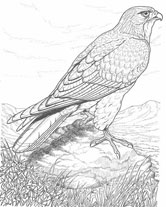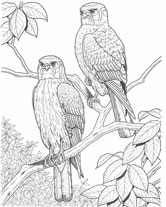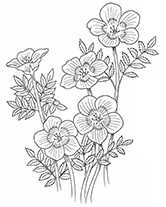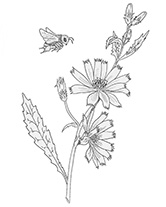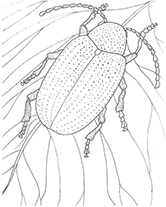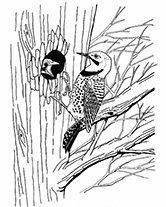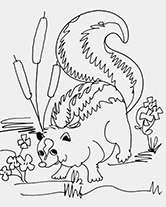Submitted on
About The Madrona Marsh Preserve... Madrona Marsh Preserve provides a valuable habitat for birds, insects, spiders, frogs, reptiles and small mammals. It is one of the last vestiges of the extensive marshland that once covered the Southern California Coastal Plain.
What is The Madrona Marsh Preserve?
The Madrona Marsh Preserve is thought to be one of the last remaining vernal freshwater marshes in Los Angeles County. In the years since California’s discovery by the Europeans, development has removed virtually all of our wetlands. Migratory water fowl populations are less than 50% of what they were in 1900. Many species are now designated as threatened or endangered. The Preserve is a mix of several micro-habitats including back dune, coastal prairie, alkali margin, vernal pool and vernal marsh area and is situated within the greater El Segundo Sand Dune System. The fine sand particles of this ancient dune system have been carried from the coastal dunes by winds for thousands of years. Each of the Preserve's habitats houses its own specifically adapted native plant species.
What is a vernal marsh?
A vernal marsh is a temporary pool of water that provides habitat for distinctive plants and animals. With no built-in water source, but located at the lowest point of the area, a vernal marsh is created by water collection from the runoff of the surrounding upland slopes. Vernal means spring, and typically the marsh is fed by winter and spring storms.
The depression which contains the Madrona Marsh is apparently a swale in the ancient dune sand caused by aeolian processes. The marsh is fed by drainage waters and by rainfall. It has no outlet. Before the development of the City of Torrance, water for the marsh was supplied through natural channels; now, there are several storm drains that flow into the marsh from the west side. Runoff from irrigation in the neighboring housing tracts flows into the marsh through these drains. During a rainstorm, there is heavy runoff into the marsh by these routes. Additionally, on the southeast corner of the Preserve, there is a sump that collects rainwater and runoff. Water from the sump is filtered and pumped up to the marsh in the wet season only. After the rainy season passes, evaporation, percolation, and transpiration reduce the water depth by about a quarter inch per day. In most years, by the end of August or early September, the Preserve is dry and remains dry until the next rainy season. The soils of the Preserve consist of fine sand silt and clay.
"SEA" Designation
The Madrona Marsh Preserve is classified as an "SEA." A Significant Ecological Area (SEA) designation is given to land that contains irreplaceable biological resources. Individual SEAs include undisturbed or lightly disturbed habitat supporting valuable and threatened species, linkages and corridors to promote species movement, and are sized to support sustainable populations of its component species.
Part of the Los Angeles County Department of Regional Planning, the objective of the SEA Program is to preserve the genetic and physical diversity of the County by designing biological resource areas capable of sustaining themselves into the future. The County’s SEA Program began in 1980 with the adoption of SEAs in the Los Angeles County General Plan.
Learn more about the SEA Program.
Why protecting The Preserve is important
Habitat Loss
Areas of wildlife habitat in the South Bay continue to be lost to human population pressure and associated development. Although there are efforts by many individuals to preserve wildlife habitat in this area, development of remaining undeveloped open space threatens the existing local habitat network. Economic expansion and continued population increase in the area contribute to habitat loss. With the loss of habitat, including the loss of corridors, open space patches that connect to larger open space areas, there is tremendous pressure on the remaining wildlife and habitat. Madrona Marsh Preserve provides a valuable habitat for birds, insects, spiders, frogs, reptiles and small mammals. It is one of the last vestiges of the extensive marshland that once covered the Southern California Coastal Plain.
Wildlife Corridors
The Madrona Marsh Preserve is a part of, and is vital to, maintaining local wildlife corridors. As an urban oasis, Madrona Marsh provides food and rest for migration birds on the Pacific Flyway. The wildlife corridors (such as local parks, open spaces, gardens, sumps, and parkways) are important because movement along corridors allows individual species and groups of species to move between suitable habitat patches that would otherwise cause their isolation. Also, the corridors provide gene-flow between isolated populations which helps prevent inbreeding and associated genetic problems for wildlife. Additionally, movement groups allow individuals to move from a habitat area used for one activity, such as feeding, to a habitat area used for breeding.
Most people have little or no opportunity to experience and enjoy nature except near their own locality of residence. For this reason it is not sufficient to save the redwoods, the everglades and ... other area of distant wilderness. It is equally important to protect nature in urban area.Elizabeth Barlow
The Forest and Wetlands of New York City
More About...
Kids' Den
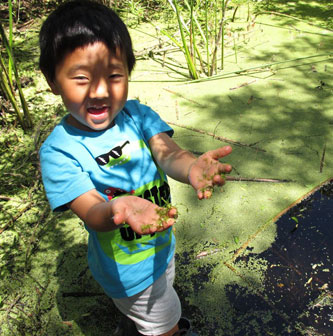
Join our Tyke Hike
1st Thursdays of Every Month
10:00 - 11:30 a.m.
For ages 3 months - 6 years.
$5 donation requested.
Hey Kids, bring your favorite adult!
Let's hike on the Madrona Marsh Preserve listening for birds, looking for frogs and learning about nature.
For more information please contact the Madrona Marsh Nature Center at 310-782-3989.
You can learn fun things about different animals at the Madrona Marsh.
For example... Did you know that Pacific Tree Frogs have different colors depending on what habitat they reside in? Pacific Tree Frogs can change their skin color at will depending on the surrounding temperatures, light, mood, and humidity. Pacifc Tree Frogs have been known to range in colors including bright green, cream, tannish brown, reddish brown, dark green, and even yellow!
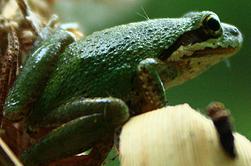
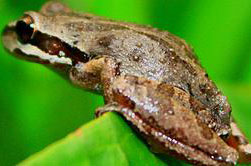
Snake skin sheddings and fur you can feel at the Nature Center!
The Exhibit Hall snake skin sheddings and real raccoon, possum, squirrel furs that you can touch. There are always science projects going on at the Nature Center that anyone can participate in. Ask your parents or guardians to call or bring you to the Madrona Marsh Nature Center or to the Madrona Marsh Preserve and hike with us!
Coloring Fun
Click images below to print and color drawings, and learn about the animals of Madrona Marsh Preserve.
3201 Plaza del Amo, Torrance, CA 90503 | Tel: 310-782-3989 | info@friendsofmadronamarsh.com
https://friendsofmadronamarsh.com/about-madrona-marsh.shtml
- 2790 reads








